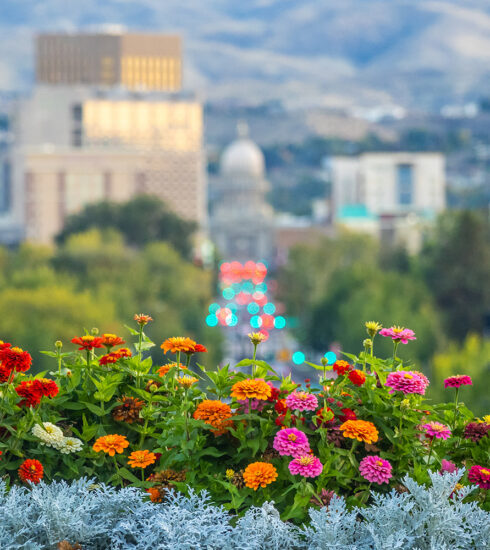Fighting After-School Cuts With Community-Led Programming
Now is the time for people who have time and resources to band together and help those that don’t.
There are a number of ways to involve yourself in the political process, but in the meantime you can drive positive community development by hosting activities yourself that will balance after school cuts.
Setting up a non-profit on your lonesome is a daunting task, but you don’t need to bankroll an entire organization to start your own community program. Here are a few ways, big and small, that you can drive positive change, whether you’re a parent or an activist (or both):
Start a Community Garden
Community gardens are not only advantageous for their educational potential, producing vegetables might help to alleviate the hunger at school problem that some critics say the budget cuts will exacerbate.
This is, however, one of the more complex solutions. To be recognized by the USDA, a community garden must not be on a private residence. So even if you have the space, you’ll likely want to look for a separate plot, and contact the landowner to see if they will let you use it.
Make sure the land has:
- 6 hours of sunlight per day.
- Good drainage.
- A clean past history and soil safe for food.
You can find a guide to these criteria, soil testing, and more resources at the archived obamawhitehouse.gov pages that deal with community gardens.
As with all projects, your first step will be community outreach to parents and teachers, as well as businesses and landowners. Corporate philanthropy is going to be an invaluable resource, and a large, strong group of community members and partners will help your case in applications for donations. You may wish to set up a board or committee, and start divvying up tasks to off-set after school cuts.
The USDA has a number of educational and financial resources that your community group can leverage.
Develop a Youth Advisory Council
One way to determine the needs of youth in a community is to ask youth directly. Properly guided, an advisory council can be a fantastic resource not just for youth, but for organizations who help them.
A youth advisory council works best when it adapts the principles of democratic, student-led learning. The general idea is to give students agency over what sorts of issues they investigate, how they approach problems, and how they want to be educated. As such, a youth advisory council works best when paired with local social organizations, businesses, and municipal governments.
Reach out to people who might be interested in off-setting after school cuts before you start the process. Talk to teachers, ask them to talk to their students, and get a group together. Then start talking to the city and to local non-profits. Arts and performance organizations are a great bet here, as they will likely see it as an opportunity to cultivate youth audiences. Talk to universities, too: professors of education love to engage in systemic change and community building. You’ll likely find allies.
Here are some general tips:
- Give the council a single annual project to work toward, based on their interests and input.
- Frame meetings around maximizing the impact of their project.
- Train and enable the council to outreach local organizations and politicians themselves, and encourage them to advocate for the needs of other youth.
- The youth should be the ones doing the work, but project leaders should be there for training, follow up, and guidance.
- Experienced artists and educators make great council leaders.
- A good size for a council is 8-10 members.
Start a Backyard Theater
No, not movies! And it doesn’t have to be backyards.
Performance can happen anywhere: from backyards, to playgrounds, to sidewalks and alleys. Starting a youth theater troupe doesn’t have to involve expensive rental fees, and if you pick community sites that have been ignored or abandoned, it can be a great way of reclaiming them and revitalizing interest in public spaces without gentrifying them up. It can also be a great way of saving money.
Performance can be a wonderful way to students to engage with issues in their communities, and placing that performance in locations where those issues are apparent can be a powerful tool for social activism.
First you’ll need partners, especially if you plan on using space that you don’t own. If you’re not an arts or education facilitator yourself, again, it’s important to include someone who is. Theater groups may have connections to municipalities for using public space and finding rehearsal space. Local businesses may even agree to donate space in exchange for attracting some extra attention to them.
The more parents, teachers, and other community members you involve, the better. If you’ve involved a ton of people in the process, audience building can happen organically. Partnerships with schools can help with that too.
Remember that outdoor theater can get complicated with liability insurance, especially if you’re planning on using a public space. Don’t ignore it!
Between costumes to sew, lines to learn, community relationships to manage, and audiences to reach, this is an intensive process, but one that can involve entire families in the community building spirit.
Super Important Considerations
You may want to consider incorporating as a nonprofit. It makes everything 10 times more complicated, but also helps mitigate legal liability, provides tax-exempt status, and makes for an easier case for funding applications.
Even if you don’t incorporate as a nonprofit, get background checks for absolutely everyone involved (including you). The importance of this step in the process cannot be emphasized enough when you’re working with youth.
Get in touch with your state government and ask about licensing and other legal requirements that you may be subject to.
Absolutely speak to a legal expert before you embark on any of these projects. Look into your state or district bar association, many of them offer pro-bono services through volunteer programs.
After School Cuts Can Be Offset
A lot of people talk about coming together during divided political times. But just agreeing not to argue isn’t going to do us any good. Bringing communities together is going to require work, dedication and a whole lot of stumbling along the way. That process is beautiful, if we have the strength to see it through. It’s a process that can start with us.









